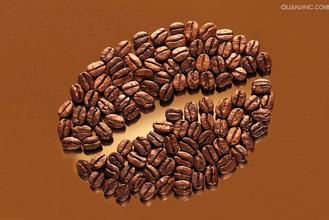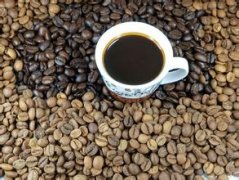Coffee roasting coffee bean baking door
Baking involves a series of chemical changes. After roasting for about 5-25 minutes (depending on the temperature chosen), the green beans lose some moisture and turn yellow. During this process, coffee beans expand, transforming from a firm, high-density green state to a low-density, fluffy state. During this process, the beans roughly double in size and begin to take on a light brown color after being lightly fried. After this stage is complete (approximately 8 minutes of baking), the heat will decrease. The color of coffee quickly changes to dark. When the preset roasting depth is reached, cold air can be used to cool the coffee beans to stop the roasting process.
Baking is generally divided into Light Baking, Medium Baking, City Baking and Deep Baking. Light Roast Coffee Beans: May have a strong smell, crispness, high acidity as the main flavor and slight body. Medium-roasted coffee beans: have a strong alcohol, but also retain a certain acidity. City-roasted coffee beans: dark brown on the surface, acidity replaced by a slightly burnt bitterness, flavor mostly destroyed. Deep Roast Coffee Beans: Dark brown in color, oily on the surface. For most coffee beans, alcohol is significantly increased and acidity is reduced. Roasted coffee is actually a way of processing food. Professional coffee roasting is a personal expression of the roaster. Just getting started with specialty coffee
Coffee beans of different roasting degrees
Coffee beans of different roasting degrees
(SPCIAITYCOFFEE) The biggest trouble is the name of the baking degree. For example, CITY, FULLCITY, FRENCH, ESPRESSO, etc. are all different because of the different baking machines used and the different production areas, and produce different baking degrees of color. In addition, some roast degrees are named after blends: ESPRESSO, for example, is a blend of coffees with a specific roast degree used to make ESPRESSO, which may have completely different flavors even if the color looks the same. So the choice of bean type, baking temperature and baking method, baking time are the main factors to determine the final flavor

Important Notice :
前街咖啡 FrontStreet Coffee has moved to new addredd:
FrontStreet Coffee Address: 315,Donghua East Road,GuangZhou
Tel:020 38364473
- Prev

Introduction to the types of boutique coffee Honduran coffee beans
The types of coffee beans are sour: mocha, Hawaiian sour coffee, Mexico, Guatemala, Costa Rica high real estate, Gillimanjaro, Colombia, Zimbabwe, El Salvador, Western Hemisphere washable premium new beans. Bitter: all kinds of old beans from Java, Mantenin, Bogota, Angola, Congo, Uganda. Sweet: Colombian Maitenin, Venezuelan
- Next

How to clean coffee machine Delong coffee machine cleaning steps
Second, Delong 22.110 automatic coffee machine descaling process? Since the coffee machine has been reminded of the descaling, then we will follow the coffee machine descaling operation, the operation steps are as follows: 1, take out the Delong coffee machine descaling solution, cut off the seal, pour into the water tank of the coffee machine, and then, put the water tank of the coffee machine back. Of course, we need to pay attention here, the water in the coffee machine tank
Related
- Guji coffee producing area of Guji, Ethiopia: Humbela, Shakiso, Wulaga
- What is the most expensive variety of Qiloso in BOP multi-variety group?
- How to store the coffee beans bought home?
- Why are Yemeni coffee beans so rare now?
- Ethiopian Sidamo all Red Fruit Sun Sun Santa Vini Coffee beans
- SOE is mostly sour? What does it mean? Is it a single bean? what's the difference between it and Italian blending?
- Is Italian coffee beans suitable for making hand-brewed coffee?
- How to choose coffee beans when making cold coffee? What kind of coffee beans are suitable for making cold coffee?
- Just entered the pit to make coffee, what kind of coffee beans should be chosen?
- Can only Japan buy real Blue Mountain Coffee? What are authentic Jamaican Blue Mountain coffee beans?

